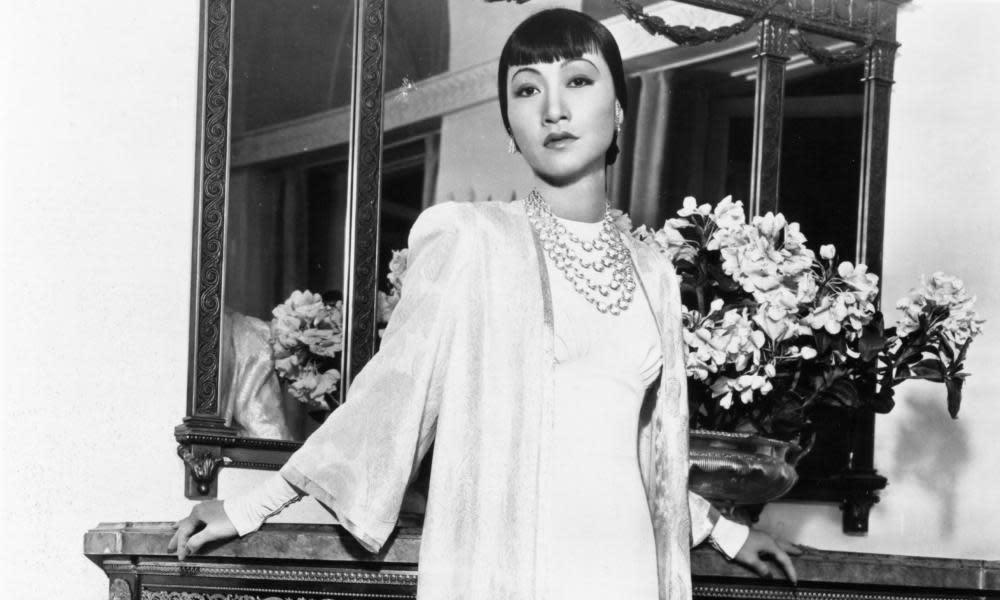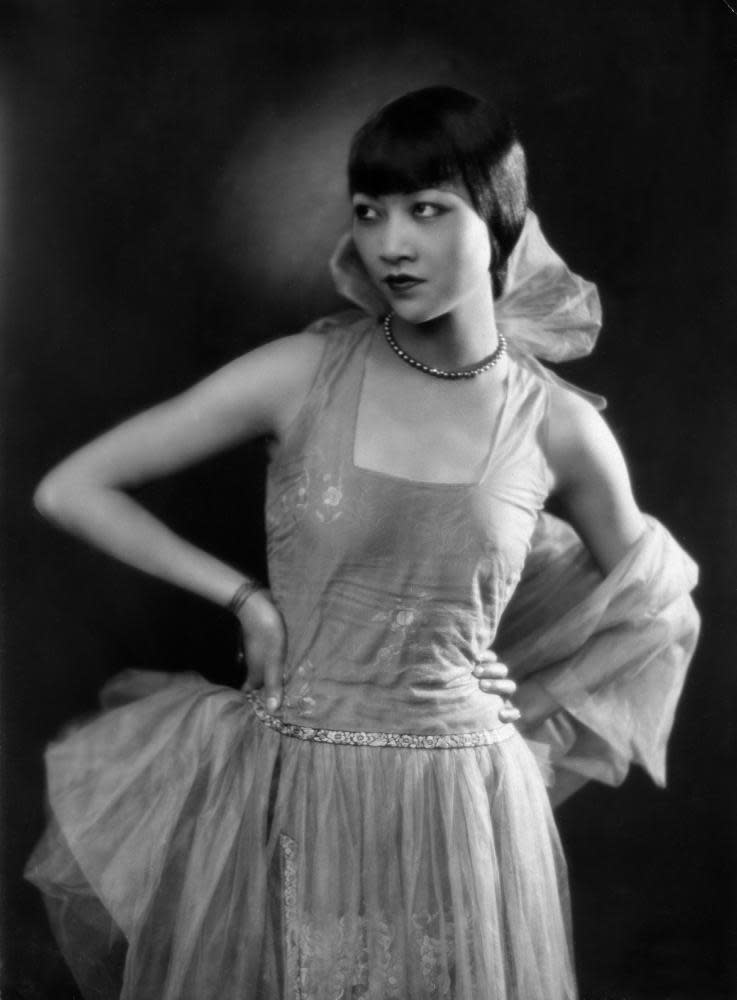Anna May Wong: the legacy of a groundbreaking Asian American star

The change in your pocket is about to become a little more glamorous. The international film star and fashion icon Anna May Wong has been named the first Asian American to be featured on US currency. As part of the Women Quarters program, which launched by honouring Maya Angelou earlier this year, Wong’s face will appear on quarters in circulation from Monday.
Wong’s career stretched from silent cinema through the talkies and the golden age of Hollywood, to TV. Her first lead role was in the 1922 Technicolor film The Toll of the Sea, and she went on to appear alongside Douglas Fairbanks and Marlene Dietrich. On the small screen she starred in the first US TV show to have an Asian American lead. She was always captivating on camera: in her best roles she is deadly serious, with a provocative air of jazz-age cool.
Related: Anna May Wong to become first Asian American to appear on US currency
The gesture acknowledges Wong’s global success in cinema, and her pioneering status as Hollywood’s first Chinese American star. It might also remind us that the racism that she encountered in the film industry has hardly gone away. Ryan Murphy’s recent Netflix series Hollywood dramatises the notorious incident in which white actor Luise Rainer was cast instead of Wong for the lead in China-set drama The Good Earth in 1937. Hollywood’s reference for “yellowface” over casting Asian actors is the reason why Wong’s US career never reached the heights it should have – but is also why she made so many films in Europe, where she had a significantly better chance of playing the lead. The 1929 British silent film Piccadilly, in which she plays an East-End potwasher who becomes a West-End dancing sensation, may well be her best work – and even then she was denied top billing.
Earlier this month, Meghan Markle interviewed journalist Lisa Ling and the comedian Margaret Cho on her Archetypes podcast, where they discussed the “toxic stereotyping of women of Asian descent” in the media. Wong was confronted with the “Dragon Lady” trope from the very start of her career, but although her legacy was tainted by the number of stereotyped roles she played, her stock has risen recently as fans and scholars have focused on her talent: her poignant performance in The Toll of the Sea, her multifaceted lead performance in Piccadilly, her smouldering chemistry with Dietrich in Shanghai Express. Too many of her appearances on screen are brief, but Wong had tangible screen presence, and makes a powerful impact in each scene.

Wong’s plain speaking on the nature of Hollywood’s race problem has also aged well. When she got the chance to say so, she was open about her frustration with Hollywood, saying: “I was so tired of the parts I had to play.” She stated the case plainly to a reporter after she moved to Europe. “Why is it that the screen Chinese is nearly always the villain?” she asked. “And so crude a villain. Murderous, treacherous, a snake in the grass. We are not like that. How should we be, with a civilisation that is so many times older than that of the west?”
Wong was born Wong Liu-tsong in Los Angeles in 1905 to second-generation Chinese American parents. Her father owned a laundry, but young Wong was naturally far more fascinated by the motion picture industry that was taking over the town than the family business. In 1919, Wong started working as an extra in Hollywood films. Two years later she dropped out of school to follow her dream of acting. Only a year later, she starred in The Toll of the Sea, a retelling of the Madame Butterfly story in lurid two-strip Technicolor. The reviews were rapturous, with the New York Times saying “she should be seen again and often on the screen”, but she wouldn’t find another lead role for years. Her best option was the play the conniving Mongol slave in Douglas Fairbanks’s 1924 film The Thief of Baghdad, a classic Dragon Lady. Wong attempted to start her own production company in order to make films on Chinese subjects, but this venture ended in a lawsuit. In Hollywood she continued to play exoticised supporting roles, including Tiger Lily in Peter Pan, and a succession of cliched vamps.
Like Josephine Baker before her, Wong moved to Europe at the end of the silent era, which reinvigorated her career. She played lead roles in films shot in Berlin and London, including Piccadilly. She was lured back to Hollywood by Paramount in the early 1930s but after 1931’s Daughter of the Dragon she refused to play the Dragon Lady again. Shanghai Express from 1932 was a career high: even though the role is brief and sacrificial, Wong looks divine, and is always compelling, even when sharing the screen with Dietrich. After that, she missed out on a series of roles that should have been hers for the taking (one executive said she was “too Chinese to play a Chinese”) including parts in The Bitter Tea of General Yen in 1933 and the lead in The Good Earth. Wong embarked on a well-publicised tour of China, although she had long faced criticism from the government there for her screen work. One heckler called her “the stooge that disgraces China”.

It was in the late 1930s that strain began to take its toll on Wong: she suffered terrible mood swings and drank to excess. However, she fulfilled her Paramount contract with a string of B-movies that gave her more diverse characters to play. Describing 1937’s Daughter of Shanghai to a magazine, she enthused: “This picture gives Chinese a break – we have sympathetic parts for a change!”
During the war, Wong all but retired from acting. She worked for Chinese charities, and made a couple of anti-Japanese propaganda films for the “Poverty Row” studio Producers Releasing Corporation. It was her role in the 1951 primetime TV series The Gallery of Madame Liu-Tsong that brought her back to public attention. Her role, as an art dealer and detective, was written specially for her, and uses her birth name. However, the show was cancelled after one season, and the all the episodes are now considered lost. After it was filmed, Wong’s health began to slide. She appeared in one more major film, 1960’s Portrait in Black, starring Lana Turner, and the studio publicity tried to explain away her absence from the spotlight by quoted an ersatz Chinese proverb: “Don’t be photographed too much or you’ll lose your soul.” Wong died a year later, having been photographed too little, leaving behind a legacy of films that only scratched the surface of her talent.
Wong has never been entirely forgotten. She has a star on the Hollywood Walk of Fame, and is to be played by Gemma Chan in a forthcoming biopic and Li Jun Li in Damien Chazelle’s Babylon. However, her legacy is more complicated than that of most Hollywood icons. Her elegant portrait on the quarter evokes a lost era of glamour – it may also make us reflect on the anti Asian American prejudice that sabotaged her career, and grimly persists today.

 Yahoo Movies
Yahoo Movies 
